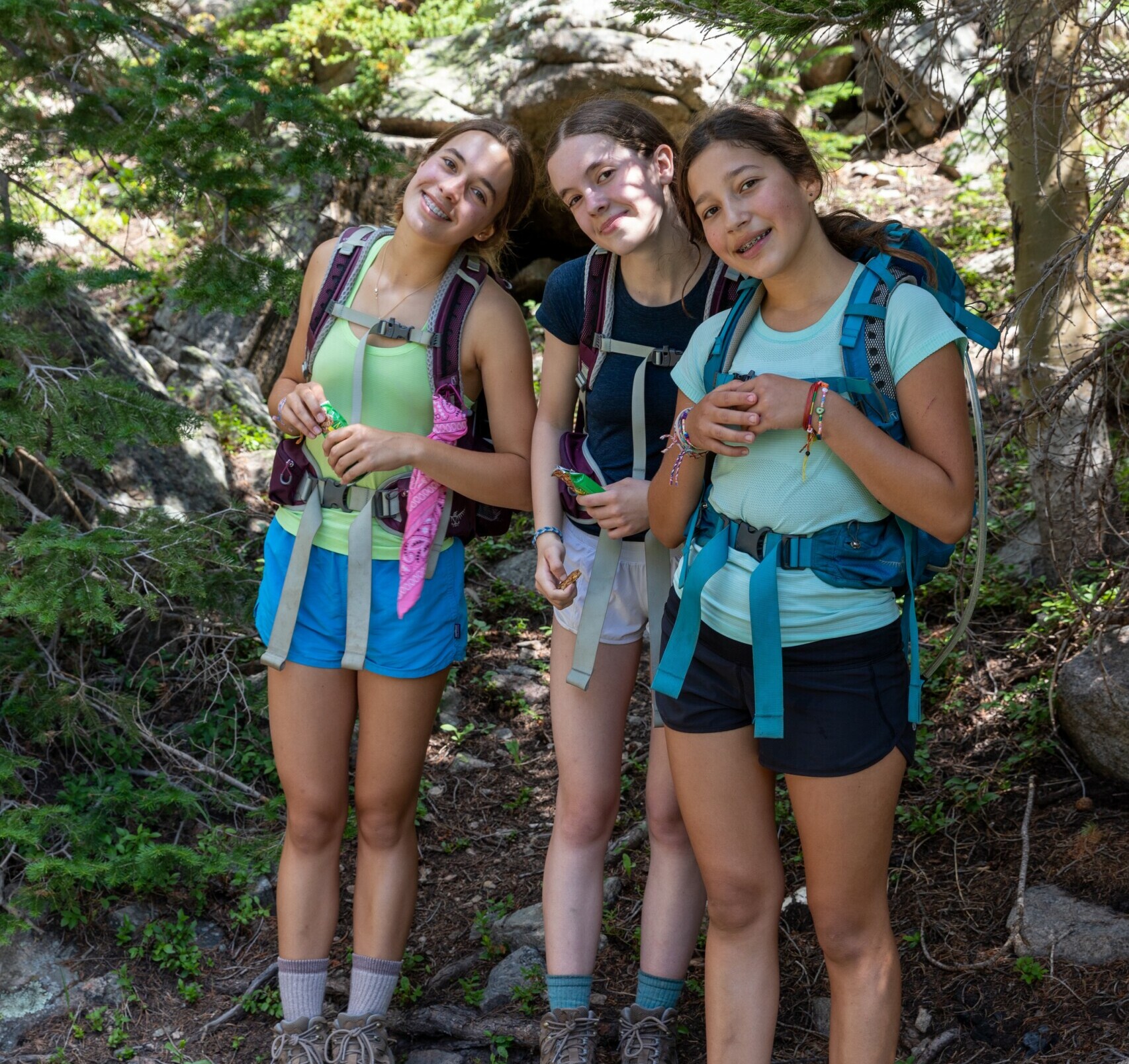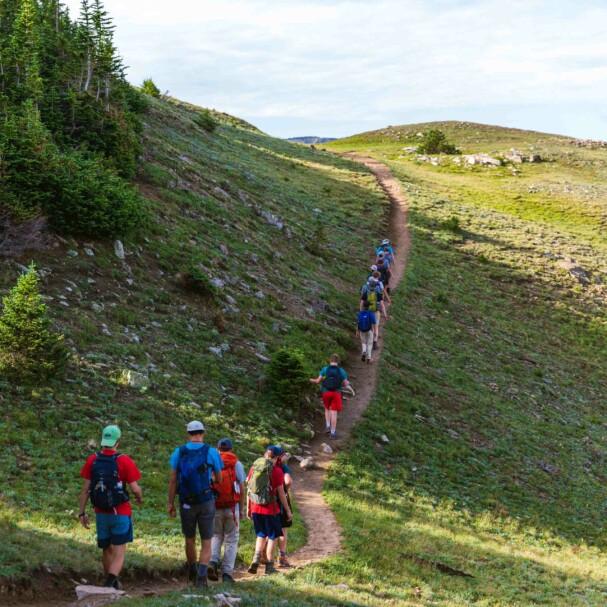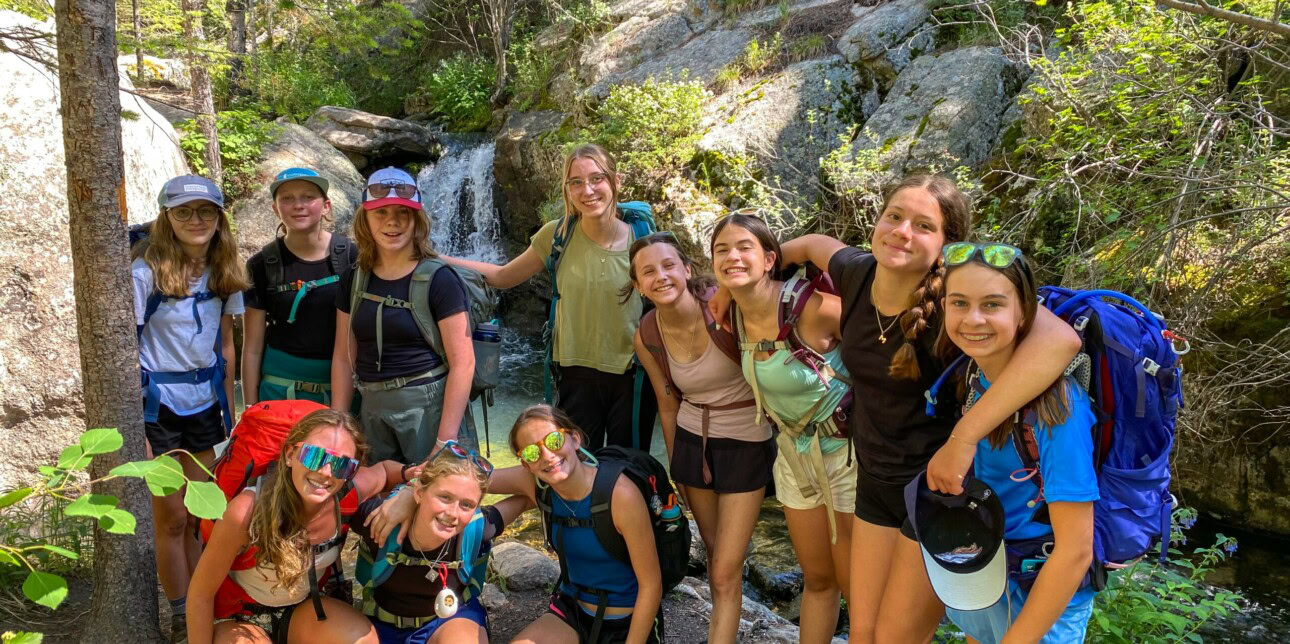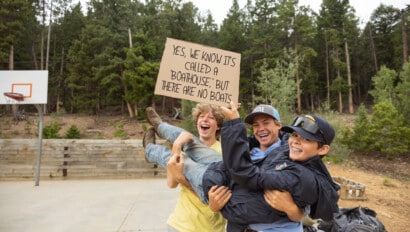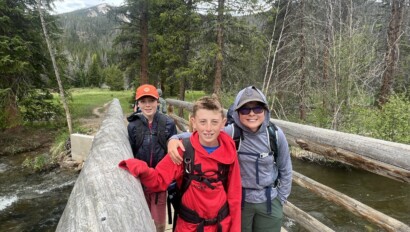Packing for camp can feel overwhelming, but when it comes down to it, three key pieces of gear make all the difference: hiking boots, a rain jacket, and a daypack. Investing in quality versions of these items ensures comfort, safety, and a better overall experience in the mountains.
That said, finding the right gear isn’t a one-size-fits-all process. While we’re sharing some of our top picks, there are plenty of excellent options out there. These recommendations come from Program Directors Rhonda Mickelson and Dylan Lederer, as well as our seasonal HBO Coordinators, Harry Robison and MK Greiner. We’ve also incorporated insights from camp families, and what we’ve seen our staff rely on over the years.
The best choice depends on fit, personal preference, how often you plan to use them, and budget. If possible, we always recommend visiting an outdoor gear store and talking with an expert to find what works best for your camper.
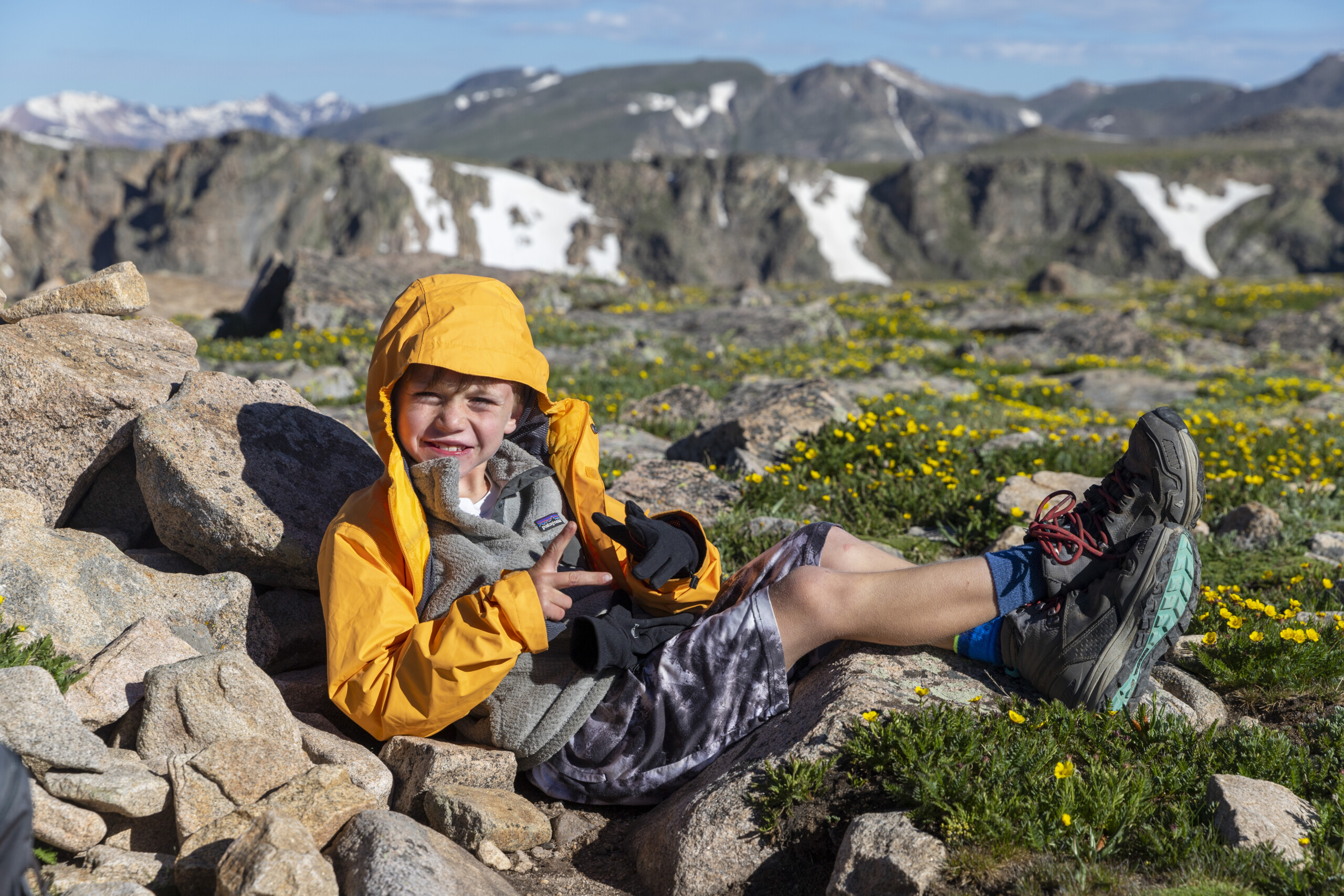
Hiking Boots
Campers will cover plenty of ground, from alpine trails to rocky terrain on hikes and backpacks. A solid pair of hiking boots is essential for navigating mountain trails. At Cheley, we require boots with good ankle support—no low-cut trail runners or approach shoes. Boots need to lace up (no Velcro straps), and if you choose lighter-weight boots, make sure they still offer proper ankle support.
Look for leather or Gore-Tex® boots with a Vibram® sole for durability and traction on rocky terrain. A good fit is crucial, so having someone with boot-fitting experience help determine the correct size is important. Wear the same type of socks when trying on boots as you will wear while hiking, and break them in before camp to avoid blisters.
Our Picks for Hiking Boots
Top Pick: La Sportiva Ultra Raptor II Mid GTX – Lightweight, breathable, and great for rough terrain.
Budget Pick: Merrell Moab 3 Mid Waterproof – Affordable, trustworthy, and a solid all-around choice.
Best For:
- Backpackers: Salomon Quest 4 Gore-Tex – Durable, supportive, and comfortable for long hikes.
- Avid Hikers: Lowa Renegade GTX Mid – A versatile option for day hikes and longer treks.
- Wide Feet: Keen Targhee III Waterproof Mid – A roomier fit with solid ankle support.
- Lightweight Option: Altra Lone Peak 9 Waterproof Mid – Best for those who prefer a trail-runner feel.
Socks Matter: No cotton. Some people wear two pairs (a lightweight liner sock and a heavier wool sock) to prevent blisters, while others prefer a single wool sock. Darn Tough and Smartwool make great options.
Rhonda and Harry both wear the La Sportiva Ultra Raptors. Dylan prefers the Lowa Renegades, while MK uses the Oboz Sawtooths.
Rain Jacket
Mountain weather changes fast, and a quality rain jacket keeps campers dry and comfortable. Avoid simple windbreakers—look for a breathable, waterproof jacket made with Gore-Tex® or similar materials. Pit zips help with ventilation, and a hood with a brim adds extra protection. Make sure the jacket is big enough to wear over a fleece and long enough to fall below the hips. A wind jacket is NOT a substitute for a rain jacket, although a rain jacket can serve as wind protection.
Our Picks for Rain Jackets
Top Pick: Patagonia Torrentshell 3L – Great all-around waterproof protection with breathability.
Budget Pick: Marmot PreCip Eco – Affordable and effective for everyday camp use.
Best For:
- Backpacking: Outdoor Research Helium Rain Jacket – Ultralight and compact for longer treks.
- Heavy Rain: Arc’teryx Beta LT – Premium protection in intense conditions.
- Breathability: Outdoor Research Aspire (Women) / Foray (Men) 3L – Pit zips and a versatile design.
- Everyday Use: REI Co-op Rainier – A great value pick for staying dry at camp.
Rhonda wears the Stio Rollick Hooded Jacket, while Dylan prefers the Arc’teryx Beta SL Jacket. Harry sports the Black Diamond Fineline Stretch Shell and MK wears REI Co-op Rainier Rain Jacket.
Daypack
A well-fitted, durable daypack makes carrying gear much easier. Look for one with a waist belt and padded shoulder straps to distribute weight evenly. The ideal size for camp is 22-30L—big enough for two full water bottles, rain gear, layers, and snacks but not too bulky. Other features to consider:
- Sternum strap – Helps keep the shoulder straps in place.
- Side pockets – Make it easier to grab a water bottle.
- Rain cover – Keeps gear dry in unexpected showers.
Our Picks for Daypacks
Top Pick: Osprey Talon 22 or 26 – Comfortable, durable, and well-designed for day hikes.
Budget Pick: REI Co-op Flash 22 – Simple, lightweight, and affordable.
Best For:
- Extra Space: Deuter Speed Lite 25 – Slightly larger for those who need more room.
- Simplicity: Patagonia Refugio 26L – A no-fuss, reliable pack.
- Multi-Use: Gregory Nano 22 – A good choice for campers who need versatility.
Rhonda and Dylan both carry Osprey packs, the Sirrus 24 and Talon 33, respectively. Harry prefers the Hyperlite Southwest 70, while MK uses the Gregory Zulu 45.
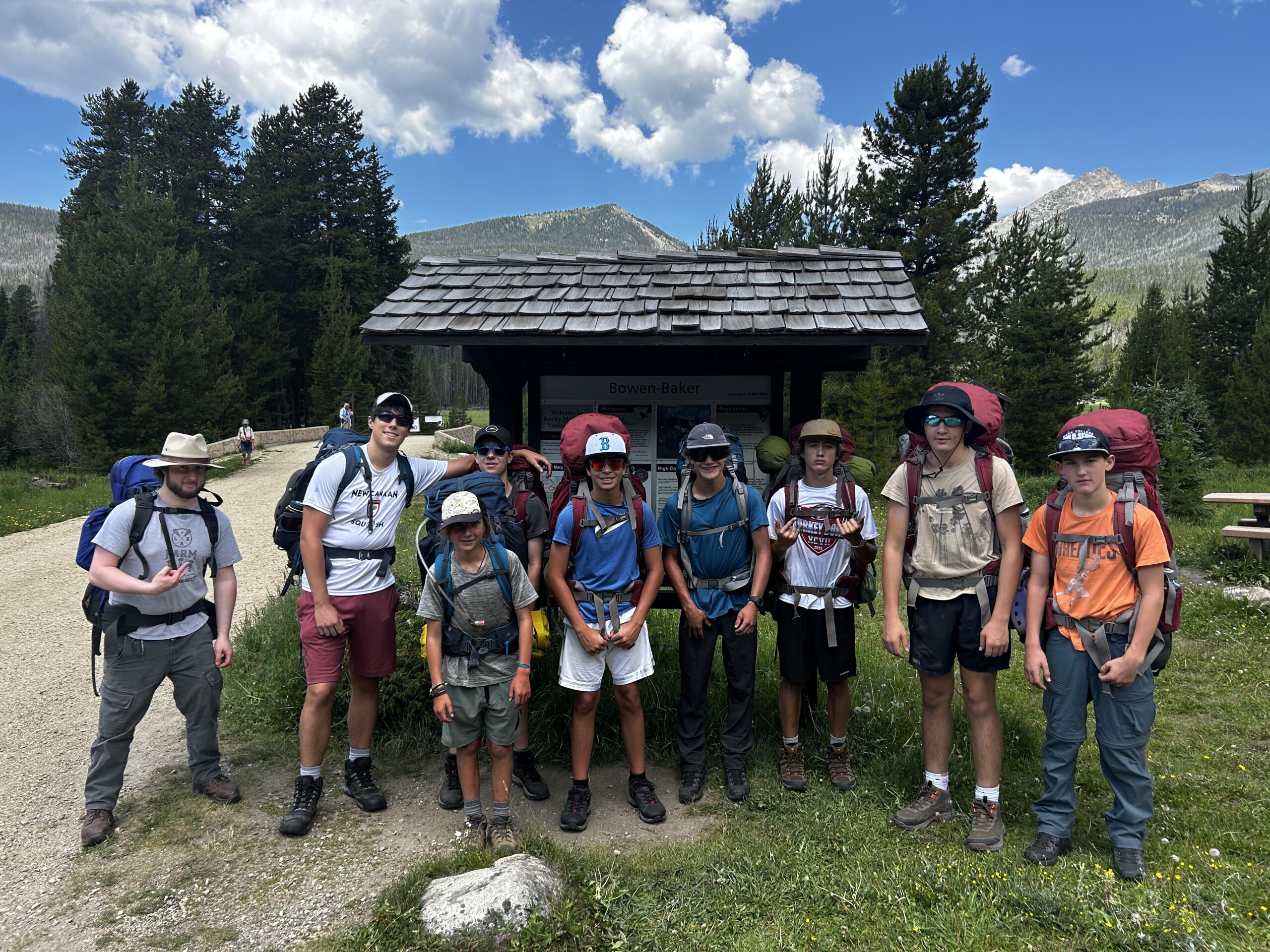
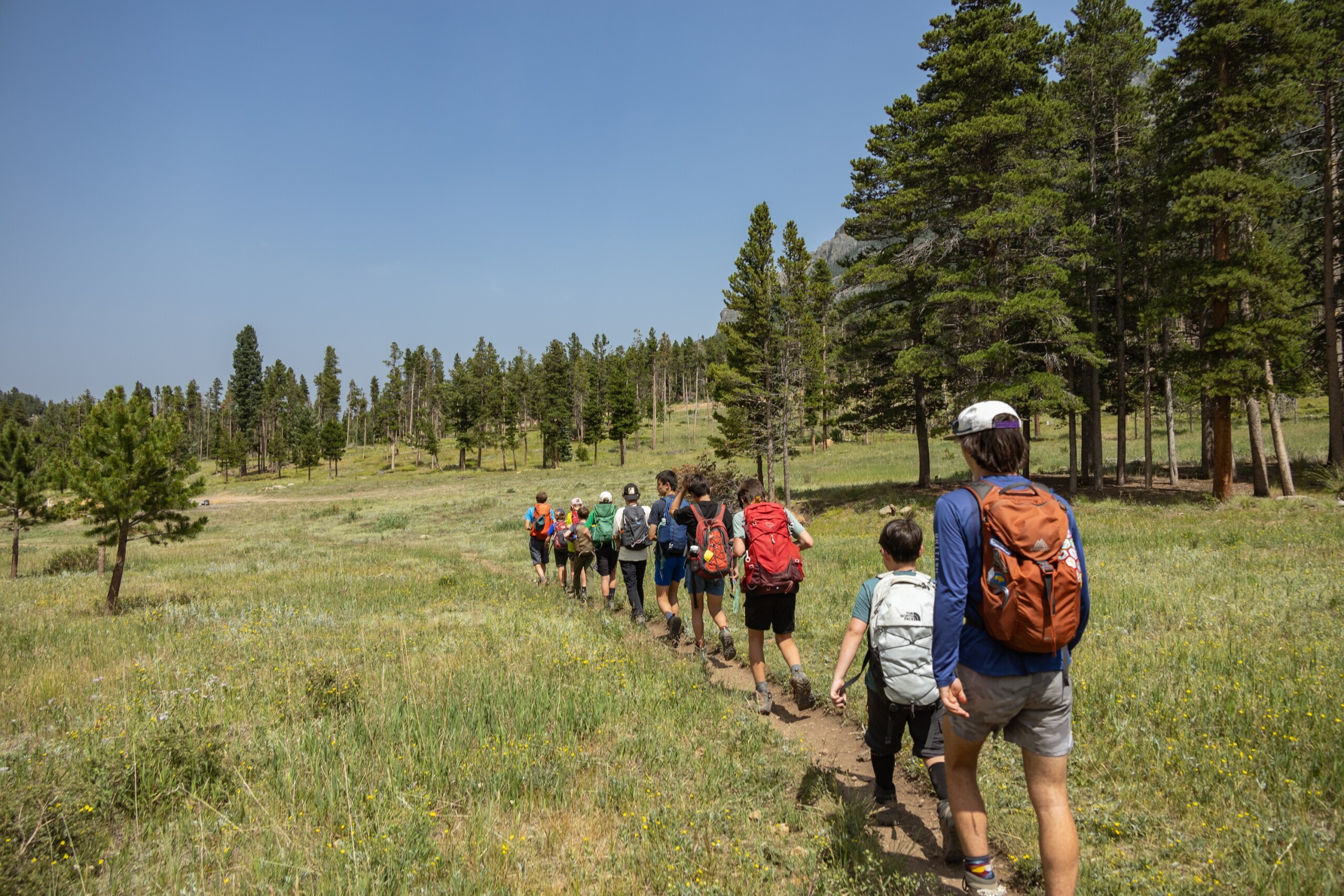
Invest Where it Matters
Packing smart means investing in the right gear. With sturdy hiking boots, a reliable rain jacket, and a well-fitted daypack, campers are prepared for whatever adventure awaits.
Where to Buy Quality Outdoor Gear
Need help finding the right gear? Check out these trusted retailers:
- REI (Outlet)®
- Dick’s Sporting Goods®
- LL Bean™
- Patagonia (Worn Wear)® (Great for second-hand gear!)
- Backcountry®
- Moosejaw®
- Eastern Mountain Sports™
- Sierra®
- Slim Pickins Outfitters (Black-owned outdoor retailer)
No matter what gear you choose, the goal is to find what’s comfortable, functional, and built to last. A well-packed camper is a happy camper, ready to take on the adventures ahead!
